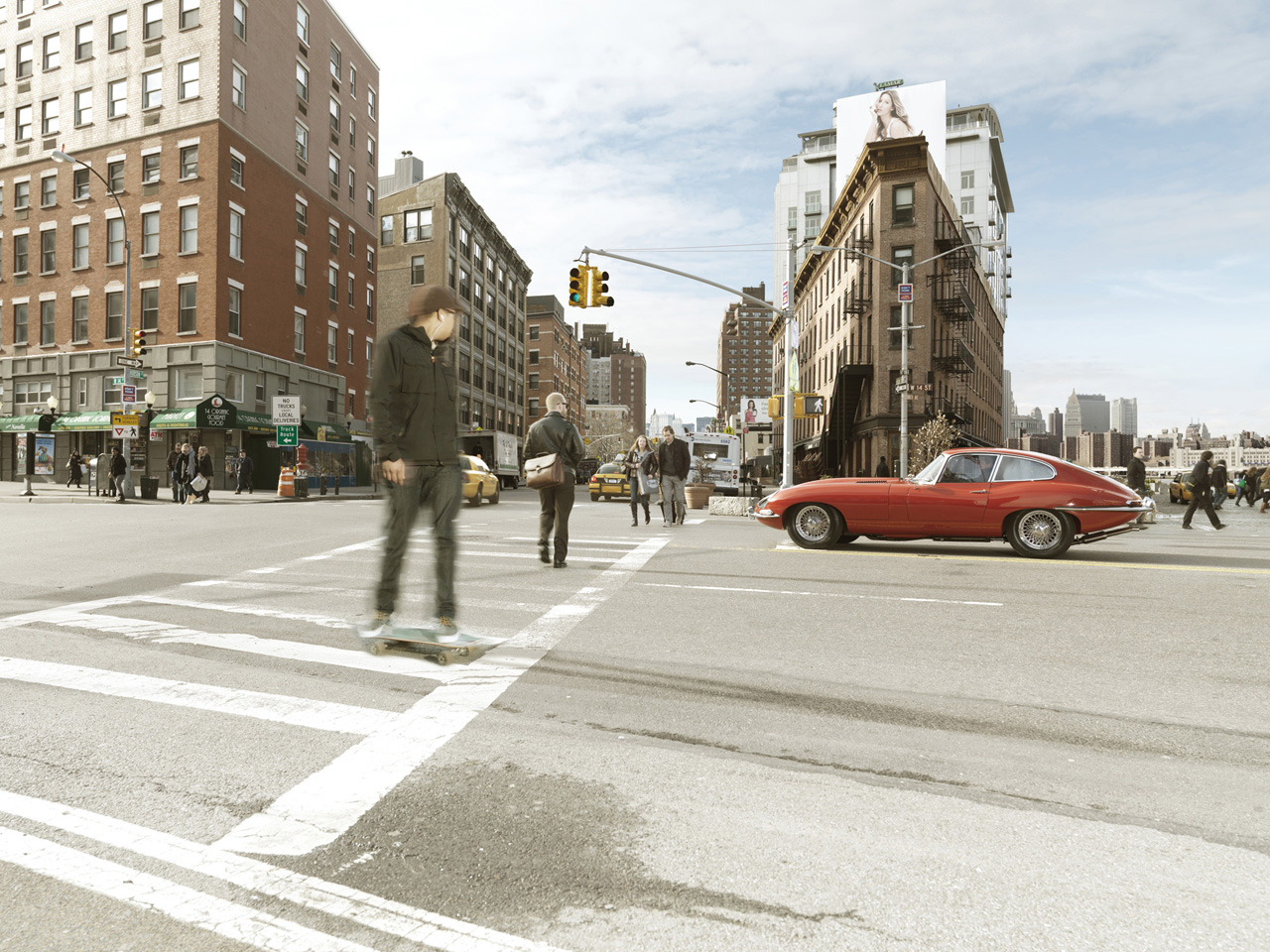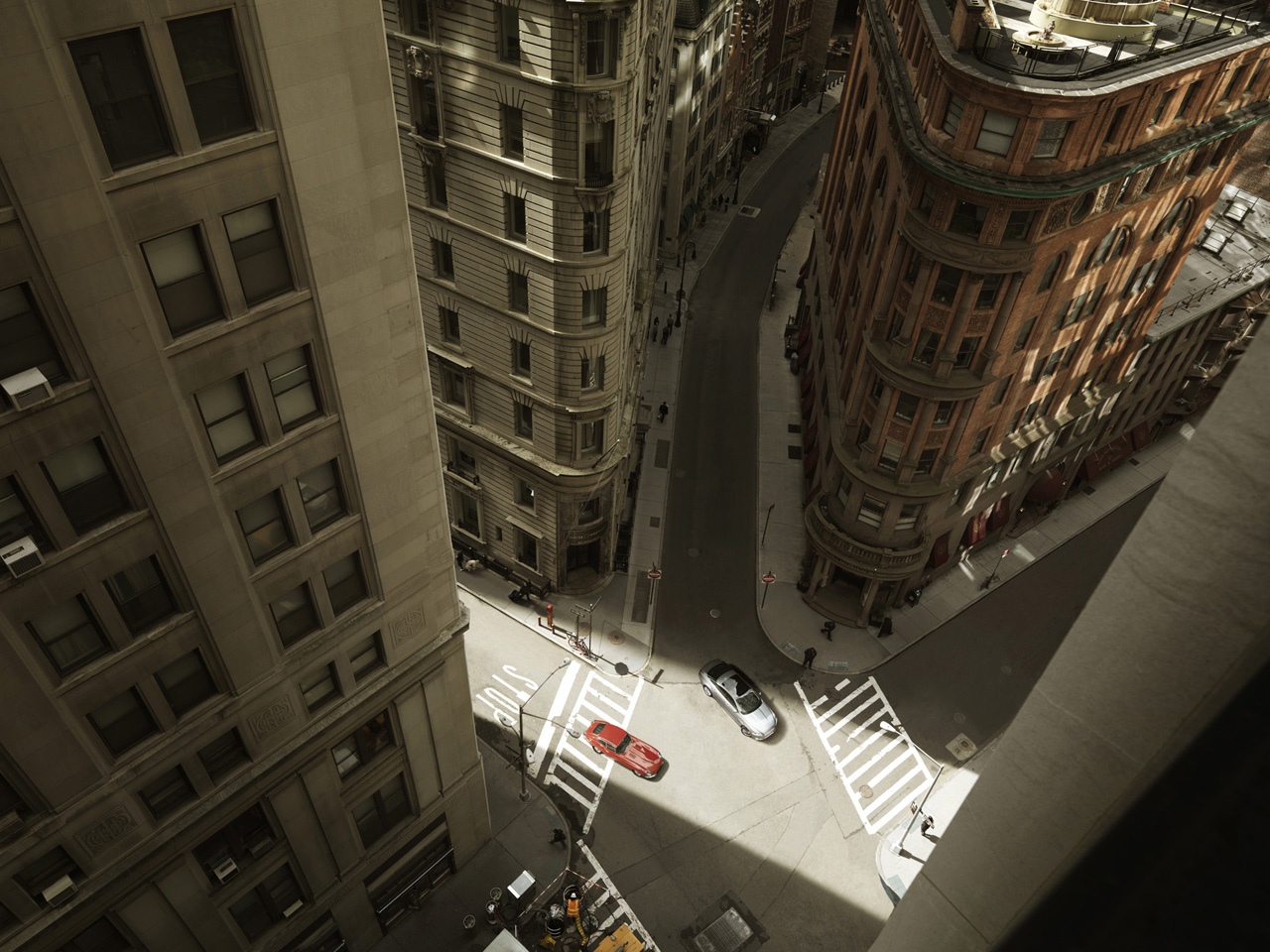The Jaguar E-Type is a classic. It's line is timeless. Jaguar proves this once again with pictures of the E-type, which celebrated earlier this year the fiftieth anniversary of the car's launch in the U.S. (as the XKE) at the New York Auto Show. More than two-thirds of all models built were sent across the Atlantic, establishing a special relationship that persists to this day.
This car was loved by celebrities, including Steve McQueen, Tony Curtis, Britt Ekland and Brigitte Bardot, amongst others. On first sight of the E-Type at its launch, Frank Sinatra is reputed to have said: “I want that car and I want it now”.
Jaguar Cars did a photo shoot to mark the event, which was also an opportunity for them to compare old with new with the inclusion of the XJ, then recently launched in the U.S.
Jaguar’s Design Director Ian Callum explains why the E-type is such an icon, like we need to be told:
“The E-Type was ahead of its time, just as the XJ is now. Williams Lyons’ philosophy was all about taking that next step. He was very adventurous and knew that it is Jaguar’s job to break the rules. He never looked back, always forward.”
The legendary E-Type sports car is a machine so beautiful that an opalescent dark blue 1963 Open Two-Seater holds a permanent place in New York’s Museum of Modern Art. Ian Callum explains, “Part of the purpose of a Jaguar is to look beautiful. We always tryto make our cars visually that little bit wider, lower and longer. That’s what our proportions are about. When you see them together, the XJ and E-Type speak the same language.”
According to Callum, the E-Type demonstrates the overriding principle of sports car design: minimum bodywork encapsulating maximum performance. He explains: “The excitement and beauty of the car were almost created as a by-product. You’ve got beauty derived from its scientific purity of surface and excitement from its proportions.”
A question Callum is often asked is whether he would design another E-Type. His answer is always the same:
“I would refuse, it had its time and place. What I will do is create something as dramatic now as that car was then and I think the XJ achieves that.“We still work very hard to get the proportions of our cars as tight to the mechanicals as possible. Unlike the E-Type, of course, the XJ has to carry five people in total comfort but the principles of wrapping the body around the package to create exciting proportions are exactly the same now as they were 50 years ago.”
While I personally think that comparing the 'E' with a mere modern Jaguar saloon, and a fairly generic-looking one at that (despite the attempt to reflect some glory from it's hallowed ancestor) is tantamount to treason, I do agree with his sentiments on the E-Type.
A car forever young.





No comments:
Post a Comment